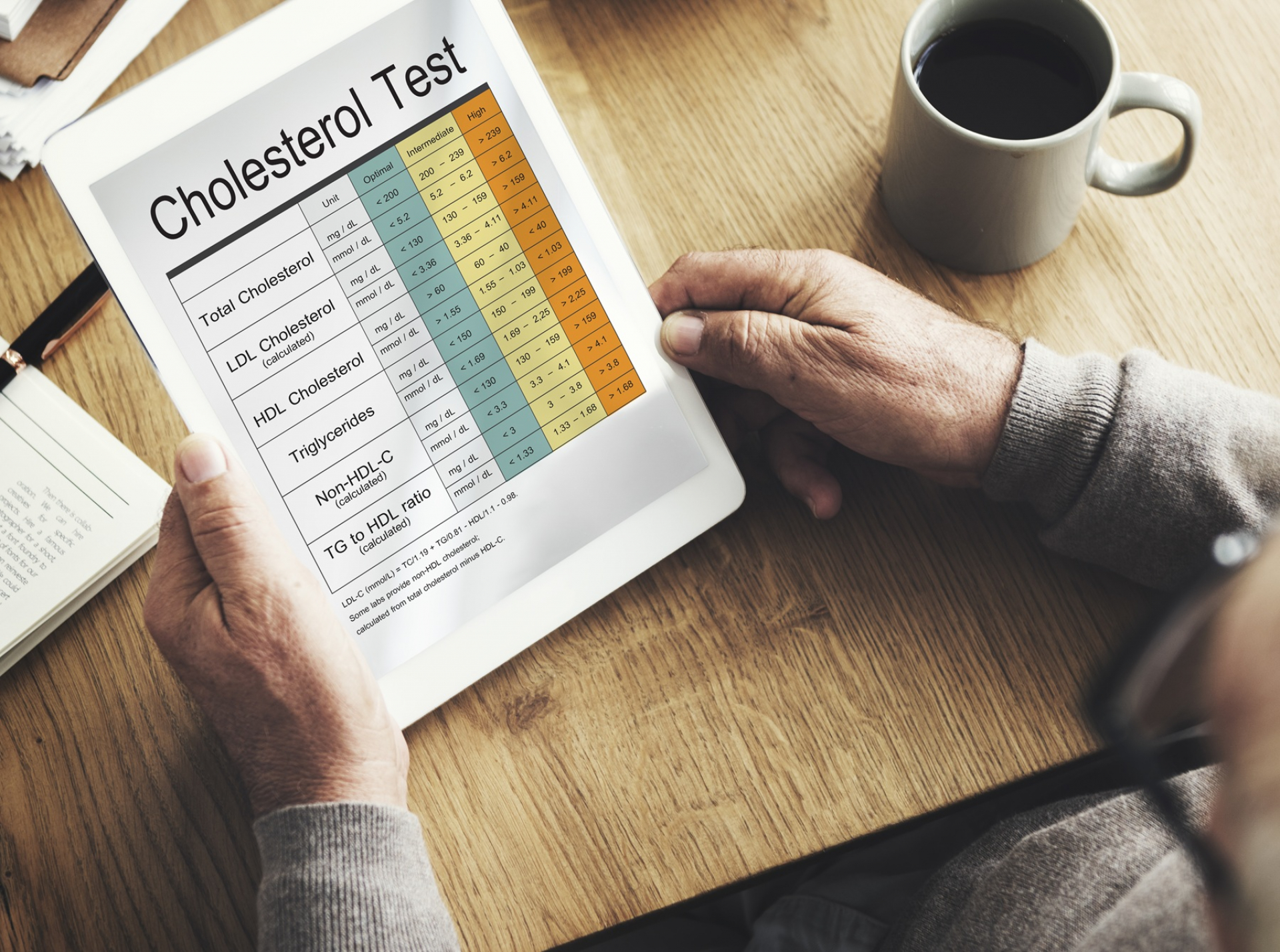Maintaining heart health is essential at every stage of life, and cholesterol plays a major role in that. Among the various types of cholesterol, LDL cholesterol, often called “bad cholesterol”, is especially important to monitor. High LDL levels can increase the risk of heart disease and stroke. But did you know that the LDL cholesterol range by age can vary, and what is considered ideal for one person may not be the same for another?
What Is LDL Cholesterol?
Cholesterol is a waxy, fat-like substance found in your blood. Your body needs some cholesterol to build cells, but too much can lead to plaque buildup in your arteries. Cholesterol travels through your bloodstream on lipoproteins:
- LDL (low-density lipoprotein): Often called "bad" cholesterol, because it carries cholesterol to your arteries, which can lead to plaque buildup.
- HDL (high-density lipoprotein): Known as "good" cholesterol, it carries cholesterol away from your arteries and back to your liver.
High levels of LDL cholesterol are linked to an increased risk of heart attacks, strokes, and other cardiovascular issues.
Why Age Matters in Cholesterol Levels
As we age, our metabolism slows, and cholesterol levels can naturally increase. This means that the ideal cholesterol levels by age may differ for children, adults, and seniors. For instance:
- Children and teens tend to have lower LDL levels.
- Adults often experience rising cholesterol due to lifestyle factors and age.
- Seniors may need to manage both LDL and HDL carefully to maintain cardiovascular health.
This is why doctors often assess your cholesterol values in the context of your age, gender, and risk factors for heart disease.
LDL Cholesterol Range by Age
The following cholesterol levels chart by age outlines ideal LDL values. These numbers are approximate and may slightly vary depending on your healthcare provider’s guidelines and your individual health status.
Children (Ages 1–19)
- Ideal LDL Cholesterol: Less than 110 mg/dL
- Borderline High: 110–129 mg/dL
- High: 130 mg/dL and above
Children should have their cholesterol checked if they are overweight, have a family history of heart disease, or have diabetes.
Young Adults (Ages 20–39)
- Ideal LDL Cholesterol: Less than 100 mg/dL
- Borderline High: 100–129 mg/dL
- High: 130–159 mg/dL
- Very High: 160 mg/dL and above
At this stage, early signs of poor lifestyle choices like unhealthy eating and lack of exercise may begin affecting cholesterol.
Middle-Aged Adults (Ages 40–59)
- Ideal LDL Cholesterol: Less than 100 mg/dL
- Borderline High: 100–129 mg/dL
- High: 130–159 mg/dL
- Very High: 160 mg/dL and above
This is when cholesterol problems typically start becoming more common, especially if there are other risk factors such as high blood pressure, diabetes, or smoking.
Older Adults (Ages 60 and above)
- Target LDL: Still ideally less than 100 mg/dL
- In seniors without heart disease, doctors may accept slightly higher levels if other risk factors are controlled.
- For those with heart disease or diabetes, LDL should be kept even lower, sometimes below 70 mg/dL.
Total and HDL Cholesterol Targets
While LDL cholesterol is critical, it is just one part of your total cholesterol profile. Here is a brief look at healthy cholesterol levels by age including total cholesterol and HDL:
|
Age Group |
Total Cholesterol |
HDL (Good Cholesterol) |
LDL (Bad Cholesterol) |
|
Children |
< 170 mg/dL |
> 45 mg/dL |
< 110 mg/dL |
|
Adults |
< 200 mg/dL |
> 40 mg/dL (men), > 50 mg/dL (women) |
< 100 mg/dL |
Lower HDL or higher LDL increases the risk of cardiovascular diseases, even if your total cholesterol appears normal.
Factors That Affect LDL Cholesterol
Several factors can influence your LDL cholesterol levels, including:
- Diet: High intake of saturated fats, trans fats, and cholesterol
- Physical activity: Lack of exercise can raise LDL and lower HDL
- Weight: Being overweight or obese raises LDL levels
- Age and gender: LDL tends to rise with age; women’s cholesterol often increases after menopause
- Genetics: Some people inherit genes that cause high cholesterol (familial hypercholesterolemia)
- Medical conditions: Diabetes, hypothyroidism, and liver or kidney disease can impact cholesterol levels
- Medications: Certain drugs, such as steroids or diuretics, may raise cholesterol levels
How to Check Your Cholesterol Levels?
A lipid panel or cholesterol blood test is used to check LDL, HDL, total cholesterol, and triglycerides. This test is typically done after 9–12 hours of fasting and involves a simple blood draw.
Healthcare providers may recommend testing:
- Once every 5 years for adults over 20 with no risk factors
- More frequently for those with heart disease, diabetes, or a family history of cholesterol issues
How to Manage LDL Cholesterol by Age?
Maintaining ideal cholesterol levels by age involves a mix of lifestyle strategies and, if necessary, medical treatment.
Lifestyle Changes:
- Eat a heart-healthy diet: Focus on fruits, vegetables, whole grains, legumes, nuts, and lean proteins
- Limit saturated fats and trans fats: Found in processed foods and red meats
- Exercise regularly: Aim for at least 150 minutes of moderate activity each week
- Quit smoking: Smoking lowers HDL and damages arteries
- Limit alcohol: Excessive drinking can raise cholesterol and triglycerides
Medications:
If lifestyle changes are not enough, your doctor may prescribe:
- Statins (e.g., atorvastatin, simvastatin) to lower LDL
- PCSK9 inhibitors for people with genetic conditions or very high LDL
- Ezetimibe or bile acid sequestrants in combination therapies
When to Worry?
High LDL cholesterol levels increase your risk of:
- Atherosclerosis (plaque buildup in arteries)
- Heart attacks
- Strokes
- Peripheral artery disease (PAD)
If you have additional risk factors, like smoking, high blood pressure, or diabetes, it is even more critical to keep LDL levels within the recommended range for your age.
Monitoring your LDL cholesterol range by age is key to maintaining heart and overall health. What is considered a healthy number for one age group might be risky for another, which is why knowing the right targets and getting tested regularly matters.
Use the cholesterol levels chart by age as a guide, and talk to your healthcare provider about personalized goals based on your health history, lifestyle, and risk factors. Small changes today can have a big impact on your long-term cardiovascular health.


